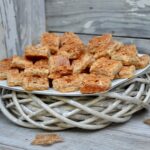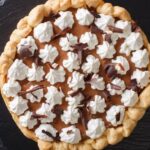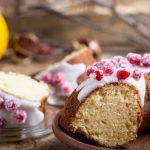Are you tired of spending hours decorating a cake only to have the decorations fall off or not stick properly? In this article, we will explore the different types of edible and non-edible decorations available for cakes and provide you with step-by-step instructions on how to ensure they stick securely. From fondant and gum paste to plastic figurines and edible glitter, we’ll cover it all.
Cake decorations play a crucial role in enhancing the visual appeal of a cake, but the frustration of them not sticking can be incredibly disheartening. Whether you’re a professional baker or a novice enthusiast, knowing how to adhere decorations to your cake can make all the difference in the final presentation. The type of decoration you use will determine the method required for sticking, so understanding the options available is key.
In this article, we’ll guide you through adhering both edible and non-edible decorations to your cakes, providing tips and tricks along the way. From using royal icing and edible glue for edible decorations to securing non-edible decorations with toothpicks and food-safe adhesives, we have got you covered. So say goodbye to decorations falling off and hello to beautifully adorned cakes that are sure to impress.
Types of Edible Decorations
When it comes to decorating cakes, the options are endless. From fondant and gum paste to edible glitter, there are various types of edible decorations that can take your cake to the next level.
Fondant is a popular choice for creating smooth, flawless finishes on cakes. It can be rolled out and draped over cakes or shaped into intricate designs. Gum paste, on the other hand, is a pliable sugar dough that dries hard and is often used to create delicate flowers, leaves, and other intricate decorations that can be placed on top of cakes.
Another trendy addition to cake decorations is edible glitter. Available in a range of colors, edible glitter adds a touch of sparkle and elegance to any cake. Whether you want a subtle shimmer or a bold statement, edible glitter is an easy way to elevate your cake.
| Type of Edible Decoration | Description |
|---|---|
| Fondant | A versatile sugar paste that can be used to cover cakes or create decorative elements |
| Gum Paste | A pliable sugar dough that dries hard and is perfect for crafting intricate cake decorations |
| Edible Glitter | Available in various colors and adds shimmer and elegance to cakes |
Incorporating these different types of edible decorations into your cake design allows for creativity and customization. Knowing how best to utilize each type will ensure that your cake not only looks stunning but also tastes delicious. As we explore further in this section on how to stick decorations on the cake later in this article, keep in mind the variety of options available when planning how you want your finished product to look.
Non-Edible Decorations
When it comes to cake decorating, there are a variety of non-edible decorations that can be used to enhance the overall look of a cake. From plastic figurines and toy cars to flowers and other decorative accents, these non-edible items can add an extra touch of creativity and personalization to your cake.
However, the challenge lies in securely attaching these decorations to the cake without causing any damage or mishaps. In this section, we will explore different types of non-edible decorations and provide tips on how to effectively stick them onto your cake.
Types of Non-Edible Decorations
Non-edible decorations for cakes come in a wide range of options, including but not limited to plastic figurines, toy cars, fresh or silk flowers, ribbons, and various decorative accents such as rhinestones or pearls. These items are often used to match the theme or occasion of the cake and can be a great way to personalize the dessert for specific events such as birthdays, weddings, or anniversaries.
One common method for adhering non-edible decorations onto cakes is by using toothpicks. For lightweight items such as small figurines or flowers, carefully insert one end of a toothpick into the decoration and the other end into the cake at an angle. This provides additional support and stability for the decoration without damaging the cake itself. Additionally, food-safe adhesives can also be used to attach heavier or larger non-edible decorations securely without risking any accidents.
When placing non-edible decorations on a cake, it’s important to consider the overall presentation and aesthetics. Ensure that the placement is balanced and visually appealing while also complementing other design elements on the cake.
Take time to arrange the decorations in a way that enhances the overall appeal of the cake while still maintaining stability. By paying attention to detail and employing proper techniques for attachment, you can successfully elevate your cake with non-edible decorations that stay in place throughout serving and enjoyment.
Adhering Edible Decorations
When it comes to decorating cakes, edible decorations can take the sweet treat to the next level. Whether it’s fondant, gum paste, or edible glitter, these decorations can add a touch of elegance and creativity to any cake.
However, the challenge often lies in making sure that these edible decorations stay put. In this section, we will explore various methods for adhering edible decorations to cakes and provide a step-by-step guide on how to ensure they stick securely.
Using Icing
One of the most common methods for sticking edible decorations on cakes is by using icing. To do this, start by applying a thin layer of buttercream or royal icing to the area where you want to place the decoration. Gently press the edible decoration onto the icing, ensuring that it makes full contact with the cake surface. Allow the icing to set and hold the decoration in place before adding any additional layers or designs.
Edible Glue
For more delicate and intricate edible decorations such as flowers or small details, edible glue can be an effective solution. Edible glue is specially formulated for use with food items and provides a strong bond without altering the taste or appearance of the decorations. Simply apply a small amount of edible glue to the back of the decoration and carefully press it onto the cake surface. Allow time for the glue to set before handling or transporting the decorated cake.
Royal Icing
Royal icing can also be used as an effective adhesive for securing edible decorations on cakes. This type of icing dries hard and provides a firm grip, making it suitable for more complex designs and structural elements.
Use a piping bag or small spatula to apply royal icing to both the back of the decoration and the desired spot on the cake. Press firmly and hold in place until secure, then allow ample time for drying before adding any additional embellishments.
By following these step-by-step techniques for using icing, edible glue, and royal icing, you can ensure that your edible decorations stick securely to your cake without any frustration or mishaps.
Adhering Non-Edible Decorations
When it comes to decorating a cake, non-edible decorations can add an extra touch of creativity and personality. From plastic figurines to toy cars and flowers, the options are endless. However, the challenge comes in making sure these non-edible decorations stay securely in place on the cake without causing any damage. Here are some tips and tricks for adhering non-edible decorations to cakes:
1. Use Food-Safe Adhesives: When attaching non-edible decorations to a cake, it’s important to use food-safe adhesives that will not contaminate the cake or pose a health risk. There are special food-safe adhesives available on the market specifically designed for use with cakes and other edible items. These adhesives provide a strong hold without compromising the safety of the cake.
2. Toothpick Method: For lightweight non-edible decorations such as paper cutouts or lightweight plastic figurines, using toothpicks can be an effective method for securing them to the cake. Simply insert a clean, food-safe toothpick into the bottom of the decoration, then carefully place it onto the cake where you want it to go. The toothpick will provide additional support and stability, keeping the decoration in place.
3. Royal Icing: Another option for securing non-edible decorations is using royal icing as a “glue.” Royal icing is made from powdered sugar, egg whites, and lemon juice or cream of tartar, creating a very sturdy adhesive when dried. You can easily pipe small dots of royal icing onto the back of heavier non-edible decorations before placing them on the cake.
By following these tips and tricks for sticking non-edible decorations on cakes, you can ensure that your decorative elements stay securely in place while enhancing the overall appearance of your delicious treat.
Troubleshooting
Adhering decorations to a cake can be a tricky business, and even the most experienced bakers may encounter issues with decorations falling off or not sticking properly. However, there are several common issues that can cause this problem, as well as simple solutions to fix them.
One common issue when it comes to sticking decorations on a cake is improper surface preparation. Before applying any decorations, it’s essential to ensure that the surface of the cake is clean and free from excess moisture and crumbs. To address this, gently brush off any loose crumbs from the cake and consider lightly icing the surface for better adherence.
Another common reason for decorations not sticking properly is using the wrong adhesive for the type of decoration being applied. For example, fondant decorations may require a different adhesive than gum paste or edible glitter. It’s important to match the type of decoration with the appropriate adhesive in order to ensure proper adherence.
Finally, temperature and humidity can also impact how well decorations stick to a cake. Extreme temperatures or high humidity can cause condensation and make it difficult for decorations to stay in place. If you’re working in a particularly warm or humid environment, consider refrigerating or chilling your cake before applying the decorations.
In summary, by ensuring proper surface preparation, using the correct adhesives for different types of decorations, and taking into account environmental factors such as temperature and humidity, you can troubleshoot and address common issues related to decorations falling off or not sticking properly on a cake. Following these tips will help ensure that your cake decorations stay put and look beautiful for any occasion.
| Common Issue | Solution |
|---|---|
| Improper surface preparation | Gently brush off loose crumbs; lightly ice the surface |
| Wrong adhesive for decoration type | Match decoration with appropriate adhesive |
| Temperature and humidity effects | Consider cooling cake before applying decoration in warm or humid environments |
Presentation
When it comes to decorating a cake, presentation is key. The way in which decorations are placed and arranged can truly make or break the overall aesthetic of the cake. Whether you’re working with edible decorations like fondant or non-edible decorations such as plastic figurines, how you present them on the cake can greatly impact the final result.
To ensure that your cake decorations are presented in an appealing and visually pleasing manner, consider the following tips:
- Consider the theme: Before placing any decorations on the cake, consider the overall theme or message you want to convey. Whether it’s a birthday cake for a child or a wedding cake, incorporating decorations that align with the theme will help create a cohesive and harmonious look.
- Balance and symmetry: When arranging decorations on a cake, it’s important to consider balance and symmetry. Avoid clustering all of the decorations in one area, and instead distribute them evenly across the top and sides of the cake for a more visually pleasing result.
- Attention to detail: Details matter when it comes to presentation. Take care to ensure that each decoration is securely attached and that any visible seams or edges are neatly tucked away. This attention to detail will elevate the overall appearance of the cake.
By taking into account these presentation tips, you can enhance the aesthetic appeal of your decorated cakes while ensuring that each element is thoughtfully placed for maximum visual impact.
Remember to pay close attention during this step as precision in placement can make all of your hard work worth it.
Conclusion
In conclusion, the art of sticking decorations on a cake is essential for creating an aesthetically pleasing and visually appealing dessert. Whether using edible or non-edible decorations, it is crucial to ensure that they are securely attached to the cake to prevent any mishaps or disappointments. Throughout this article, we have explored the different types of edible and non-edible decorations available for cakes, as well as provided step-by-step guides and tips for adhering them.
When it comes to sticking edible decorations on a cake, it is important to use the right tools and techniques. From using icing to edible glue and royal icing, there are various options available for ensuring that fondant, gum paste, and edible glitter stay in place. Additionally, when dealing with non-edible decorations such as plastic figurines or flowers, it is essential to use toothpicks or food-safe adhesives to securely attach them to the cake.
In order to enhance the overall appeal of the cake, presentation plays a key role. The placement and arrangement of decorations can make a significant difference in the visual impact of the cake.
By following the tips and techniques outlined in this article, individuals can ensure that their cake decorations not only stick properly but also contribute to the overall aesthetic of the dessert. Mastering the art of sticking decorations on a cake will allow bakers and decorators to create stunning and memorable creations time and time again.
Frequently Asked Questions
How Do You Get Decorations to Stick to a Cake?
Decorations can be made to stick to a cake by using buttercream or royal icing as “glue”. Simply apply a small amount of the icing to the back of the decoration and press it gently onto the cake.
How Do You Glue Cake Decorations?
Cake decorations can be glued using edible adhesive such as tylose glue, which is made by mixing together water and tylose powder to create a sticky paste. This can be used to adhere fondant or gum paste decorations to the cake.
How Do You Attach Something to a Cake?
To attach something to a cake, you can use toothpicks or skewers to secure heavier items in place. For lighter items, piping gel or melted chocolate can also be used as an adhesive to ensure they stay in place on top of the cake.

Welcome to my blog about home and family. This blog is a place where I will share my thoughts, ideas, and experiences related to these important topics. I am a stay-at-home mom with two young children. I hope you enjoy reading it! and may find some helpful tips and ideas that will make your home and family life even better!





